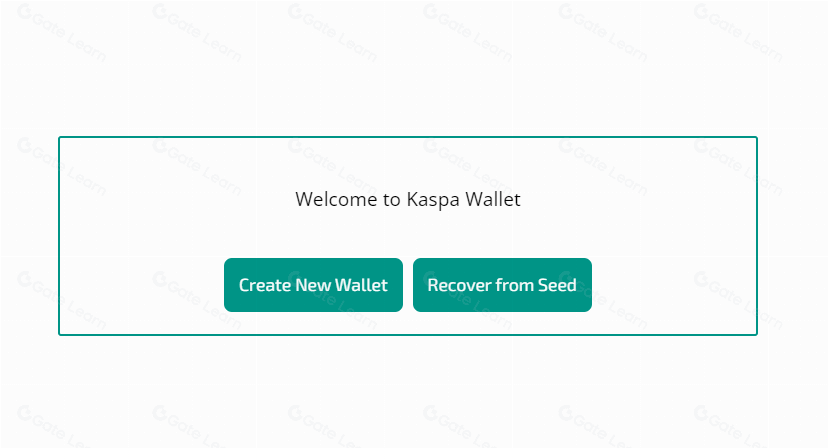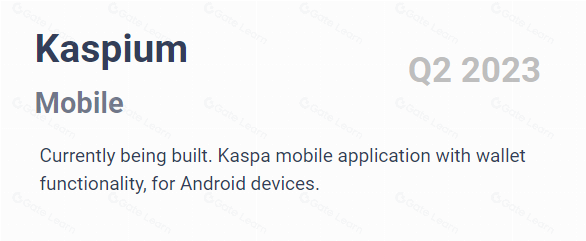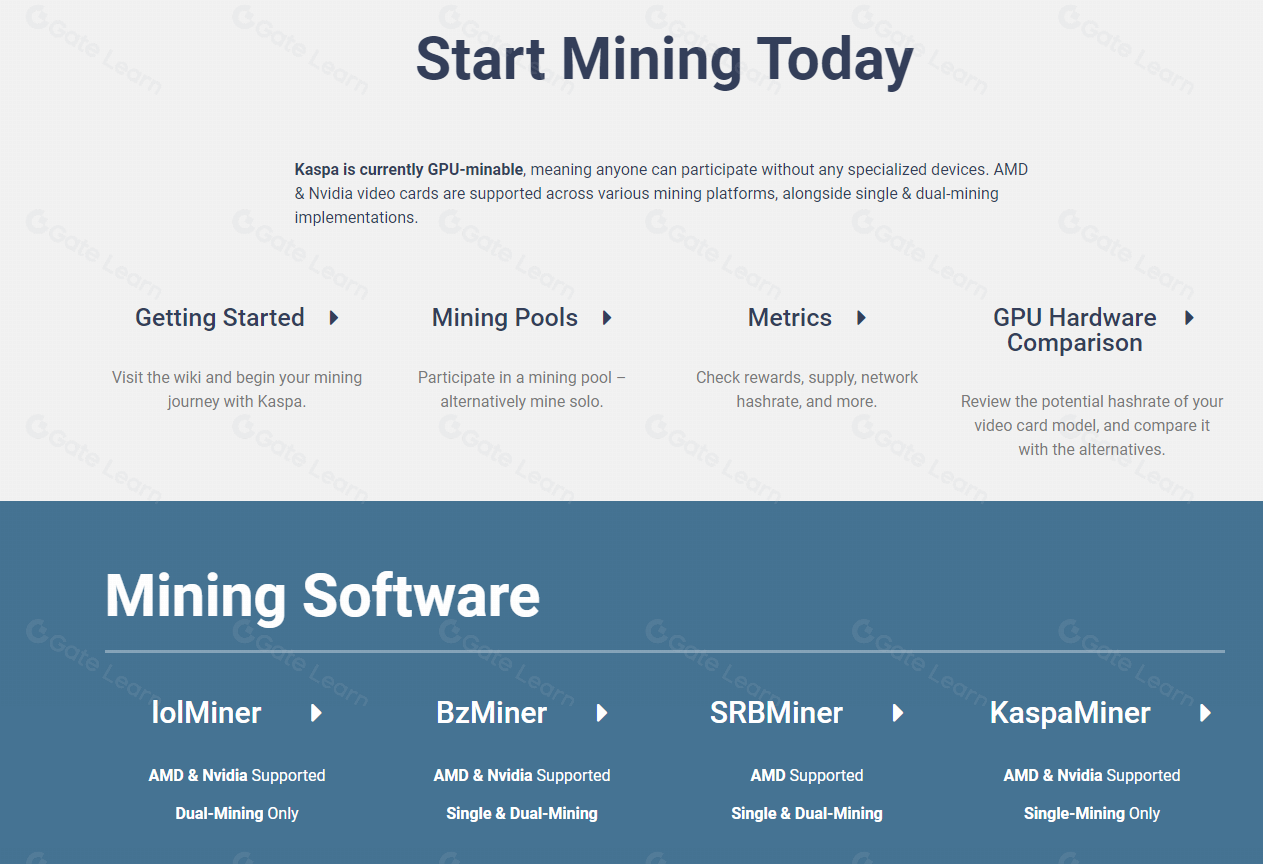Kaspa at Work: Wallets, Transactions, and Mining
Lesson 4 explores the practical aspects of the Kaspa network, focusing on the diverse wallet options for users, the intricacies of Kaspa transactions, and the details of the mining process. It highlights the network's commitment to accessibility, security, and innovation in mining technology, offering insights into how Kaspa facilitates efficient and secure digital asset management and mining activities.
Wallets and Transactions
Types of Kaspa Wallets
Kaspa provides a variety of wallet options to suit diverse user requirements:
- Desktop Wallets: These wallets are a blend of functionality and security, ideal for users who prefer a more hands-on approach. They offer extensive features and control but require users to be mindful of computer security.
- Mobile Wallets: Perfect for users who value convenience and mobility. These wallets are user-friendly and provide easy access to funds, though they may not be as secure as other options due to the inherent vulnerabilities of mobile devices.
- Hardware Wallets: The pinnacle of security. These wallets store private keys in a physical, offline device, safeguarding them from online threats. They are best suited for long-term storage or for securing large amounts of KAS.
- Web Wallets: These are accessible via a web browser and are ideal for quick transactions. However, they carry higher security risks as they are more susceptible to online threats.
Choosing the right wallet involves balancing security, convenience, and the intended use of the KAS tokens.
In the Kaspa ecosystem, users have access to several wallet options, each designed to cater to different aspects of user interaction, security, and convenience.
- KDX (Desktop Wallet): The KDX represents the desktop class of wallets for Kaspa. It’s designed to be intuitive, making it accessible to users regardless of their technical expertise. This wallet includes the full-node software, meaning it maintains a copy of the entire Kaspa blockchain. The main advantages of KDX are its effortless installation and zero configuration requirement, allowing users to quickly set up and start interacting with the network while contributing to its decentralization by running a full node.

- KaspaNet (Online Wallet): KaspaNet is a web-based wallet that provides users with expediency and convenience. Being an online wallet, it allows for quick transactions and easy access from any device with internet connectivity. The trade-off with web wallets like KaspaNet typically involves a lesser degree of security compared to offline solutions, as private keys may be stored online. However, for users engaging in frequent transactions and prioritizing accessibility, KaspaNet offers a practical solution.

- Kaspad (CLI Daemon): Kaspad is the command-line interface (CLI) daemon for Kaspa. It is the backbone of the network, running a full-node that fully validates transactions and blocks. Advanced users who prefer to interact with the Kaspa network through a command-line interface would choose Kaspad. This option often requires more technical knowledge to operate but offers flexibility and a high degree of control over the node’s operation and wallet functionality.

- KaspiuM (Mobile Wallet): KaspiuM is Kaspa’s mobile wallet offering, currently in development. The aim is to provide a mobile application with wallet functionality for Android devices, extending Kaspa’s reach to mobile users. Mobile wallets are known for their convenience, allowing users to manage their digital assets on the go. Once released, KaspiuM will likely provide a user-friendly interface, quick access to funds, and the practicality that mobile users need.

Each wallet serves a specific segment of the Kaspa user base, from those seeking the full control and robustness of a full node to those needing quick, on-the-go access afforded by mobile solutions. As the Kaspa network grows, these wallets will play a crucial role in ensuring that users can interact with the network in a way that best suits their needs and preferences.
The Mining Ecosystem
Getting Started with Kaspa Mining

To begin mining Kaspa, which touts the highest throughput proof-of-work cryptocurrency model, you need to understand its unique mining ecosystem:
Understanding Block Rewards: Kaspa distinguishes itself by rewarding miners with block rewards every second, thanks to its rapid block propagation rate. This frequent reward system is underpinned by the network’s low variance in block discovery, allowing even small-scale miners to find blocks and receive rewards consistently.
Algorithm - kHeavyhash: Kaspa’s mining relies on the kHeavyhash algorithm, a novel approach that involves matrix multiplication between two standard Keccak hash functions. This algorithm’s computational intensity allows for dual mining with other cryptocurrencies and is designed with quantum resistance in mind. It’s a future-proof method that prepares Kaspa for next-generation mining technologies.
In-depth on Optical Proof of Work (OPOW)
Optical Proof of Work is an innovative concept that Kaspa is poised to leverage. It prepares the network for the integration of silicon photonics, marking a transition towards mining with photonic devices, which are significantly more energy-efficient than traditional electronic-based mining setups.
No Orphan Blocks: Kaspa’s blockDAG framework eliminates the issue of orphan blocks by indexing all mined blocks within the DAG structure. This revolution in design not only optimizes security but also ensures that the work of miners is never wasted.
Chromatic Halvings: Kaspa’s emission schedule includes Chromatic Halvings, which means rewards decrease smoothly each month, leading to a 50% reduction in emissions annually. This model facilitates a sustainable mining economy and a deflationary token supply without the abrupt impact of traditional halving events.
Mining Pools, Solo Mining, and Hardware Considerations
Kaspa supports both pool and solo mining strategies. Miners can choose to contribute to a pool to gain more consistent rewards or embark on solo mining if they have sufficient computational power.
Mining Pools: Pools are a collective where miners share computational resources and rewards. They are an excellent choice for miners who may not have enough power to frequently discover blocks on their own.
Solo Mining: For those with the capability, solo mining offers the full reward for discovered blocks. This approach is suited to miners with high-end equipment and the ability to manage longer periods between rewards.
Mining Software and Hardware: To mine Kaspa, miners can use a variety of software options compatible with different hardware setups. The choice of software depends on whether miners prefer AMD or Nvidia GPUs, and whether they are interested in single or dual-mining.

Quantum Resilience and Computational Developments
Kaspa’s mining architecture is designed with future computational challenges in mind, including quantum threats. While the immediate quantum threat to blockchains like Kaspa is the potential vulnerability of EC-based signatures to quantum attacks, Kaspa can mitigate this by adopting post-quantum signature schemes when necessary.
Quantum Mining: The Kaspa network is designed to be robust against the dynamics introduced by quantum mining, which could potentially lead to higher orphan rates in traditional blockchain systems. Kaspa’s GHOSTDAG protocol and the parameterless nature of DAGKnight may offer a layer of protection against the shifts in mining power distribution that quantum miners might bring.
Quantum Security: The network’s flexible architecture allows it to accommodate bulkier post-quantum signatures without significant throughput reductions. While the development of scalable quantum computers remains a distant concern, Kaspa is positioned to adapt its cryptographic practices to larger elliptic curves as an interim solution, enhancing security against quantum attacks.
Nodes and Global Distribution
As of early 2024, Kaspa boasts around 340 public nodes worldwide, with additional private nodes contributing to the network’s strength. This global distribution of nodes underpins the decentralized nature of Kaspa, ensuring robustness and resistance to centralization.






